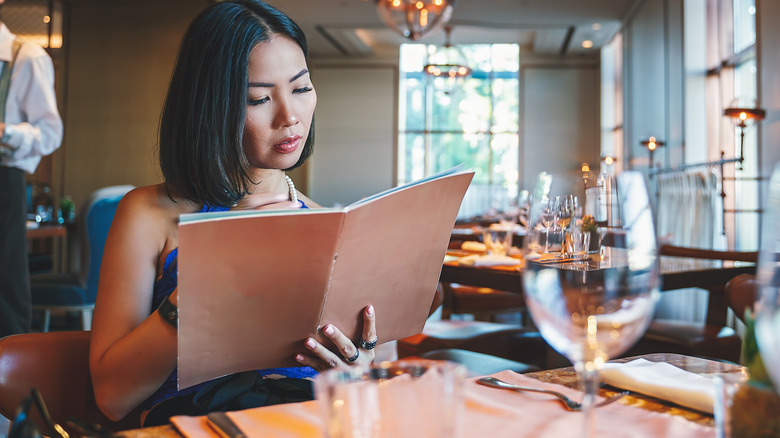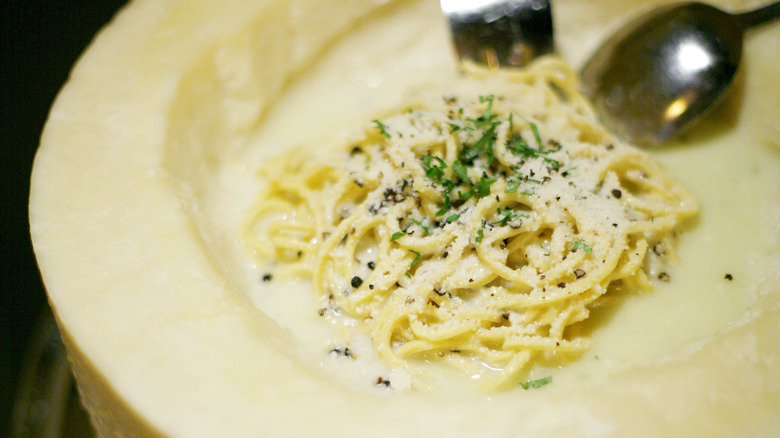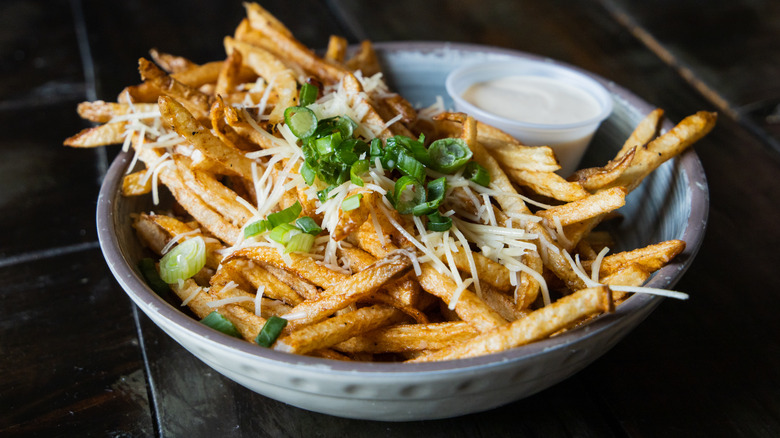How To Spot A Restaurant Menu 'Margin Builder' And Why It's A Red Flag
Running a restaurant is a tough business. You're dealing with perishable products, labor shortages, licensing fees, and an entire operation that could be shut down at the slightest fumble. Therefore, restaurants are generally run with pretty slim margins. This is why certain items on menus exist solely to make those margins, well, a little less slim. "Margin builders" are frequently found on menus at more upscale restaurants, where that lobster and caviar have to be, effectively, subsidized with low-cost, high-retail crowd-pleasers.
So, what are some of the most notable restaurant margin builders? Let's start with guacamole. While one can acknowledge that avocados are not the cheapest fruit around, a little basic fourth-grade math makes it pretty clear that the $25 price tag on your bowl of guac can hardly be justified. But they can get away with it, because are you really going to say no to chips and guac? On Taco Tuesday, of all days? Of course, you're not.
The best way to spot a margin-building menu item is to look for dishes that are made up of basic ingredients, such as certain pastas, or sound luxurious but might not be authentic, like some truffle-flavored dishes.
Skip the pasta
One of the most egregious margin builders of the last year or so is the pasta dish cacio e pepe, which only requires about three ingredients: pasta, Pecorino Romano, and black pepper. Despite the low cost of its ingredients, cacio e pepe has managed to become a $20+ menu item around the country. Now, it might be dressed up, say, by serving the pasta in a cocktail shaker, but this all seems like a grand ruse to get people to pay more for something that is essentially mac and cheese for adults.
In fact, unless it's made in-house from scratch, pasta in general is a great margin builder. If you've ever been miffed to order a fancy pasta dish and find it to be 95% spaghetti, and 5% whatever the "star" ingredient is, you've probably felt the sting of this bait and switch. (We're looking at you, caviar pasta.)
Champagne and truffles
Another menu red flag, believe it or not, is the "truffle on everything" phenomenon. There has been a boom in fake truffle products that cost little to produce, but can be upcharged because they ostensibly use a luxurious food item. Truffle fries or truffle mashed potatoes, for example, are often made with inexpensive truffle oil, and may even come topped with aesthetic, but tasteless, faux truffles.
But the most insidious margin builder at restaurants is arguably alcohol. Pre-COVID, sales of alcoholic beverages made up about a third of restaurant revenue. This number has dipped slightly, thanks to people cutting back in response to inflation and the growing sober-curious movement. This is probably why you've noticed prices for mocktails and other non-alcoholic beverages rising, as restaurants struggle to make up the difference. Now, if you're ordering a craft cocktail with 15 different ingredients, that necessarily involves investments in a fully stocked bar, or even some homemade bitters, shrubs, or other ingredients. But if all you want is a glass of wine, understand that you're paying more for the convenience than for the quality.



